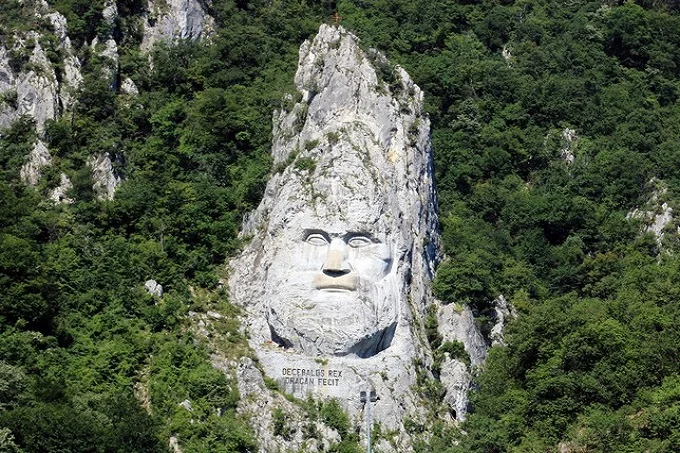On the scenic banks of the Danube River, on the border between Romania and Serbia, stands the King Decebalus Statue, a giant sculpture carved into the rock and the European tallest rock sculpture.
The artwork is placed near the village of Orlova, in the heart of Romania’s magnificent scenery, overlooking the Iron Gate. Decebal, Dacia’s final king, reigned from 87 to 106 AD and was one of the ancient kingdom’s most formidable monarchs.
He was regarded as a skilled strategist and a powerful monarch who is still recognized for his noble treatment of his people and country. His brilliance is commemorated in this statue.
The massive piece, which represents King Decebal’s head and is 43 meters tall and 25 meters wide, is today regarded Europe’s tallest and sixth-largest rock sculpture.
The monument was created by Romanian artist Florin Cotarcea between 1994 and 2004, owing to the design and financial assistance of his countrymen Joseph Constantin Dragan, a businessman and history buff who was later naturalized as an Italian in Giuseppe Constantino Dragan.
A team of 12 sculptors worked for ten years on the sculpture, which was frequently put to extreme stress owing to its height. A Latin inscription was etched onto the monument’s base after it was finished: Decebal Rex, Dragan Fecit, meaning “King Decebal created by Dragan.”
Tabula Trajan, a monument to Emperor Trajan, is located on Serbian-owned land on the other side of the Danube. The monument honors the Roman army’s several successes in the conquest of Dacia.
The sculpture “Decebal Rex” stands out not just because of its size, but also because of its placement. It shows a great ruler who, as the lushly overgrown rocks show, continues to control the limits of the region he guarded until his death.
